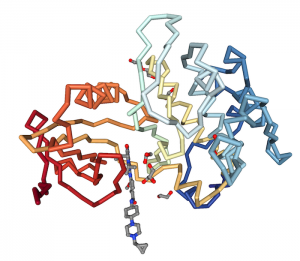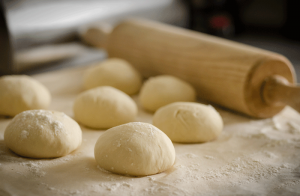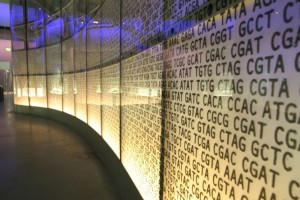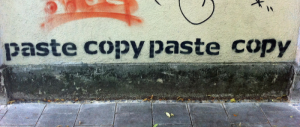Enter your address to receive notifications about new posts to your email.
Articles tagged Yeast
(44 results)
-
Neural networks dive deep to locate proteins
As in real estate, so in cell biology: location is key. Knowing where a protein localizes in a cell gives insight into its function, and new research published in G3 describes a method to accurately identify a protein’s subcellular localization through high-throughput microscopy and machine learning. To determine a protein’s subcellular localization, researchers can tag…
-
The push-and-pull evolution of tandem-duplicated drug-resistance genes
Two highly similar genes that contribute to drug resistance in a pathogenic yeast have been co-evolving as tandem duplicates for the past 134 million years—while maintaining distinct functions. This is the conclusion of a paper in the April issue of GENETICS by Lamping et al. that examines the evolutionary effects of ectopic gene conversion. Evolutionary…
-
Live long and prosper (under the right conditions)
Restricting calorie intake seems to promote longer lives in a wide range of organisms, from microbes to mammals. Some determined youth-seekers are already adopting reduced-calorie diets in an attempt to extend their lifespans. But it’s not clear yet that these anti-aging effects apply to humans, and the mechanisms by which they work in other organisms…
-
Snorkeling out of the membrane
One of the last places you’d expect to find a charged amino acid residue is buried within the hydrophobic interior of a lipid bilayer. And for the most part, this expectation holds true: portions of proteins that span membranes are typically composed of hydrophobic residues. But in some cases, the positively charged residues lysine and…
-
Beyond stressed-out: the hypoxic response
Deep within a tumor, sequestered from an adequate blood supply, a cancer cell grows and multiplies. Far beneath Earth’s surface, a microbe lives and thrives in similarly low-oxygen conditions. Generally, oxygen depletion causes serious distress to aerobic organisms—what allows these life forms to survive? The cellular response to hypoxia is massive. Hypoxia alters the expression…
-
Cold-loving fungi fight frostbite, but can’t take the heat
To the unaided eye, Antarctic soil and alpine glaciers may appear to be barren wastelands devoid of life. But some microbes call hostile habitats like these home. Research on one such organism, published in the latest issue of G3, reveals some of the mechanisms behind cold adaptation—and explains why these otherwise hardy creatures can’t survive…
-
Using yeast to expose cancer’s genetic vulnerabilities
Cancer profoundly scars the genome of an affected cell. Amplification and overexpression of chunks of DNA sequence are common—but it’s not always clear whether these changes are directly involved in the disease or byproducts of some other malfunction. Further complicating the search for treatments, many genes that are altered in cancer cells are involved in…
-
How studying bakers’ yeast unlocked the secrets of our body’s recycling plants
In the late 1980s, Japanese biologist Yoshimori Ohsumi finally got to run a lab of his own and began casting around for a suitable topic to occupy himself and his new grad students. At 43 years old, he did not consider himself much of a scientific success; he was now hoping to corner a niche of biology…
-
Behind the podium: TAGC Keynote Speaker Jef Boeke
“This is the first self-replicating species that we’ve had on the planet whose parent is a computer. Because it’s very difficult to eliminate multiple genes from a cell . . . we decided early on that we had to take a synthetic route—even though nobody had been there before—to see if we could synthesize the…
-
Model Organism Databases join forces: Announcing the Alliance of Genome Resources
Model Organism Databases (MODs) and the Gene Ontology Consortium play a crucial “behind-the-scenes” role in the work of model organism geneticists and many other biomedical researchers. This guest post by the newly-formed Alliance of Genome Resources announces the group’s intention to integrate the efforts of the MODs and other genome resources. You can learn more…
-
Runaway amplification: 800 copies and counting
Massive amplification of genes is a desperate strategy taken by stressed populations adapting to an environment that has become inhospitable. Such amplifications can give an underperforming gene a much-needed boost in productivity simply by increasing its copy number. But counterintuitively, research reported in the May issue of G3 implies these amplifications may arise even in…




![By National Park Service [Public domain], via Wikimedia Commons.](https://s36063.pcdn.co/wp-content/uploads/2017/03/biscayne_np_snorkeling-1-300x214.jpg)

![By 23am.com (Antarctica Sailing Trip) [CC BY 2.0], via Wikimedia Commons.](https://s36063.pcdn.co/wp-content/uploads/2016/11/rsz_1antarctica_sailing_trip_pct283253678755pct29-300x201.jpg)




